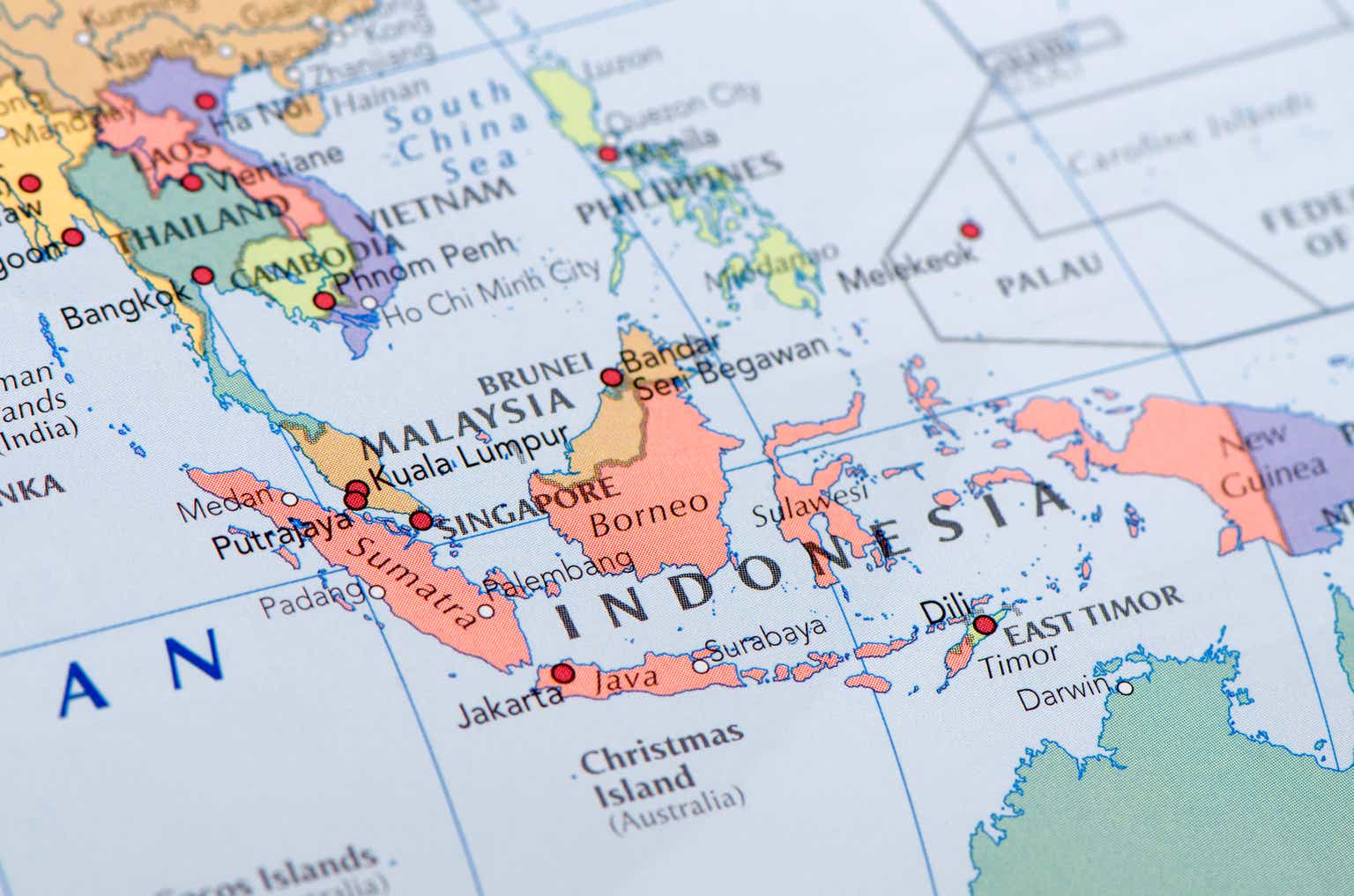The outlook for Southeast Asia (also the ‘Association of Southeast Asian Nations’ or ASEAN) has improved significantly over the last year, with inflation well under control and the last of the region’s central banks, the Monetary Authority of Singapore (i.e., the Singaporean central bank or ‘MAS’) moving toward the end its tightening cycle. On the demand side, the combination of softening inflation trends and a monetary policy pivot bodes well for domestic consumption. External demand tailwinds from post-COVID/reopening tourism recovery should also support the region’s tourism-dependent economies. Alongside easing commodity prices, which have been a tailwind for corporate earnings on the cost side, expect more upward revisions on the horizon. Perhaps the most compelling reason to own ASEAN, though, is its increased attractiveness as an FDI destination as corporates accelerate their ‘China+1’ diversification strategy (i.e., corporates building alternative footprints to reduce their China dependence). Having lagged this year vs. alternative ‘multipolar’ plays like Mexico, the Global X FTSE Southeast Asia ETF (NYSEARCA:ASEA) portfolio, currently priced at ~11x fwd earnings, screens attractively.
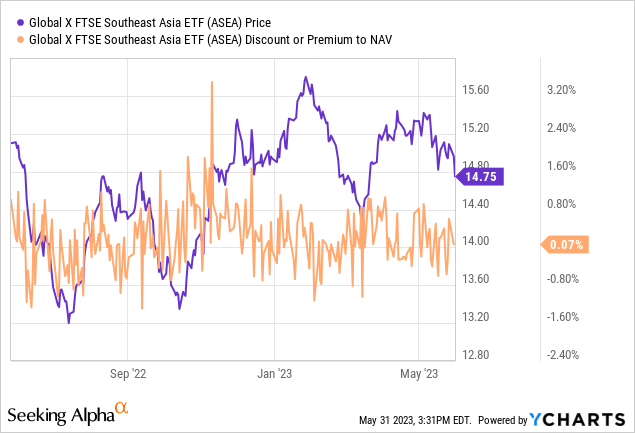
Fund Overview – Low-Cost Exposure to a Financials-Heavy Southeast Asian Portfolio
The US-listed Global X FTSE Southeast Asia ETF seeks to track, before expenses, the yield and price performance of the FTSE/ASEAN 40 Index, comprising the largest 40 ASEAN companies (by market cap) within the FTSE All-World Index. Each index constituent is also subject to liquidity criteria, most notably a >20% turnover of shares outstanding in the last twelve months (on a free float-adjusted basis). The ETF held ~$46m of net assets at the time of writing and charged a 0.7% expense ratio, making it a cost-effective option for US investors looking to access ASEAN equities. A summary of key facts about the ETF is listed in the graphic below:
Global X
The fund is spread across 42 holdings, with Financials making up the largest sector allocation at 57.5%. No other sector has a >10% allocation. The four sectors with portfolio weightings above a 5% threshold are Communication Services (8.4%), Consumer Staples (5.2%), Real Estate (5.2%), and Industrials (5.1%). On a cumulative basis, the top five sectors accounted for ~81% of the total portfolio, making ASEA one of the more top-heavy ETFs in Asia. Given the fund’s outsized exposure to major banks in the region, its equity beta stands at a relatively low 0.76 to the MSCI EAFE (EFA), a proxy for developed markets ex-North America, and 0.62 to the MSCI Emerging Markets (EEM). The portfolio also maintains a low standard deviation at 17.3%, highlighting its through-cycle defensiveness.
Global X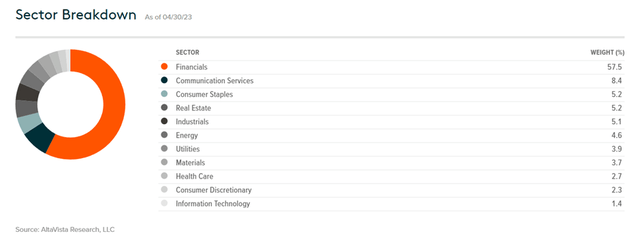
In line with its financials-focused sector allocation, ASEA’s six largest holdings are major banks. At 10.4%, Singapore-based DBS Group (OTCPK:DBSDF) is the largest bank holding, followed by Indonesia-based PT Bank Central Asia (OTCPK:PBCRF). Two other Singaporean banks, OCBC Bank (OTCPK:OVCHY) and United Overseas Bank (OTCPK:UOVEY), are on the top-six list, along with Indonesian leaders PT Bank Rakyat Indonesia (OTCPK:BKRKY) and PT Bank Mandiri (OTCPK:PPERY). In total, the five largest holdings (all major banks) contribute ~40% of the overall portfolio. Reflecting the fund’s concentration on the regional banking sector, the underlying portfolio trades at a modest premium to book value at 1.3x, screening reasonably relative to the portfolio’s ~12% return on equity. Where the valuations stand out, though, is on P/E – given the region’s outsized growth potential (ex-Singapore), the 11.5x 2023 earnings valuation isn’t demanding at all.
Global X
Fund Performance – Lackluster Capital Growth; Steady Distribution
On a YTD basis, the ETF has been mostly flat but has annualized at a 2.8% pace in market price and NAV terms since its inception in 2011. Given the fund’s low beta, it is perhaps unsurprising that performance has been stable through the cycles. Unlike many other Asian ETFs, ASEA experienced a limited % drawdown through last year’s tightening cycle and the 2020/2021 pandemic. Since then, the fund has recovered its losses, most recently helped by the easing of China’s ‘zero-COVID’ restrictions. Still, the annualized gain over the last ten years isn’t great at +1.3%, though this largely reflects the equity underperformance throughout the region. Relative to its largest country exposures (proxied by the iShares MSCI Singapore Capped ETF (EWS) and iShares MSCI Indonesia ETF (EIDO)), ASEA has outperformed over the last decade.
Global X
The semi-annual distribution is derived entirely from income, with the fund’s outsized exposure to dividend-paying bank stocks supporting much of the capital return. At a 30-day yield of 2.9%, ASEA offers a decent income stream, which has generally been sustained through the cycles. While the fund has suffered a decline in payout through the COVID-impacted years, in line with earnings, a pending tourism-led recovery this year should kickstart a return to long-term distribution growth.
Morningstar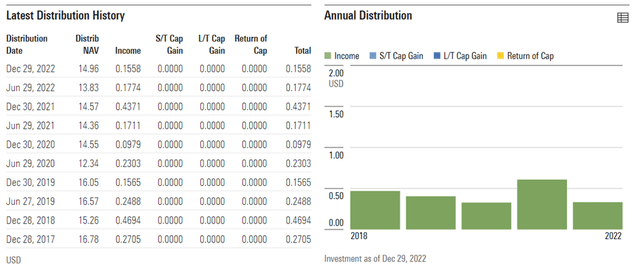
Confluence of Tailwinds to Boost ASEAN Prospects
Southeast Asia’s appeal as a foreign direct investment (FDIs) destination hasn’t waned, with inflows already back to pre-COVID levels and well on their way to crossing $200bn this year. Indonesia has stood out thus far, helped by its natural resources and policy incentives to attract EV-related FDI (battery and production facilities), most notably from North Asia. FDI from the EU and North America has mostly flowed into the vibrant electronics ecosystem in north Malaysia (e.g., Intel’s (INTC) $7bn packaging facility), while Vietnam has been a beneficiary of both sides, given its low-cost, relatively well-educated labor force and proximity to China, as well as its trade agreements with the West. So as US-China geopolitical tensions continue to escalate, driving ‘friend-shoring’ and ‘China+1’ diversification strategies, the neutrality of ASEAN countries positions the region to be among the biggest beneficiaries. The ASEA ETF, given its outsized exposure to the major banks (mainly via the ASEAN financial hub, Singapore), should broadly track this regional macro trend.
InvestASEAN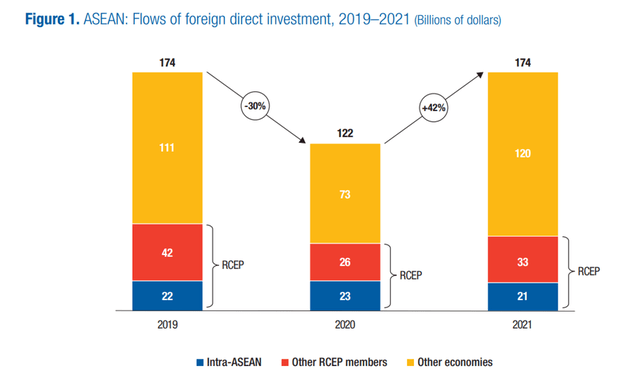
In the near term, the return of Chinese tourists will be a key growth driver for the region. Inbound arrivals from China have long been the largest contributor to tourism in the region, so the ‘COVID-zero’ impact hit ASEAN particularly hard. But ex-China travel has since recovered much of its pre-COVID losses, and with China’s services recovery also gaining traction, I expect arrivals to continue picking up in H2 (vs. the gradual rise in Chinese outbound travel thus far). In the face of growing export headwinds this year, a tourism recovery would offer meaningful growth support for ASEAN in the meantime. Thailand, the ASEA ETF’s third-largest country exposure, stands to reap the most GDP benefit from a tourism rebound, though the region as a whole should also see healthier current account balances and stabilized FX as a result.
CEIC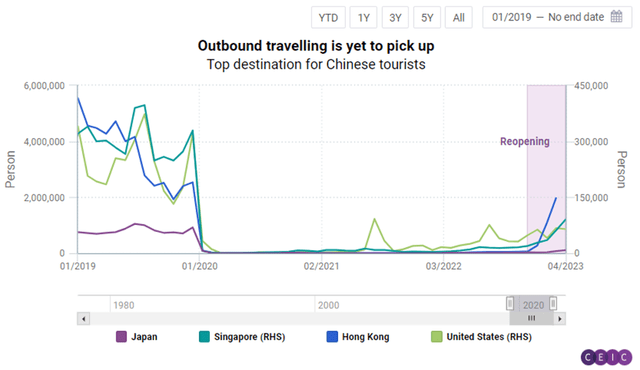
A Low-Cost Vehicle to Ride the Multi-Pronged Southeast Asian Growth Story
The near-and long-term outlooks for ASEAN equities appear compelling. Having suffered from the one-two punch of cost-push inflation and declining tourism in the pandemic-affected years, these headwinds are finally beginning to reverse. Easing global commodity and energy prices should not only boost consumption but also lower input costs, in turn allowing for improved corporate margins. And with inbound tourism already on the rise post-reopening, continued momentum here should provide an additional catalyst for equities, given the region’s strong dependence on tourism. Long-term tailwinds from FDI inflows have only accelerated in the meantime, with ASEAN, by virtue of its trade ties to both the US and China, presenting investors with a unique opportunity to hedge against geopolitical tensions. The financials-heavy ASEA portfolio hasn’t quite re-rated as much as comparable ‘China+1’ beneficiaries either; at ~11x fwd P/E for a group of high-quality ASEAN franchises, value-focused investors should find a lot to like here.
Read the full article here


